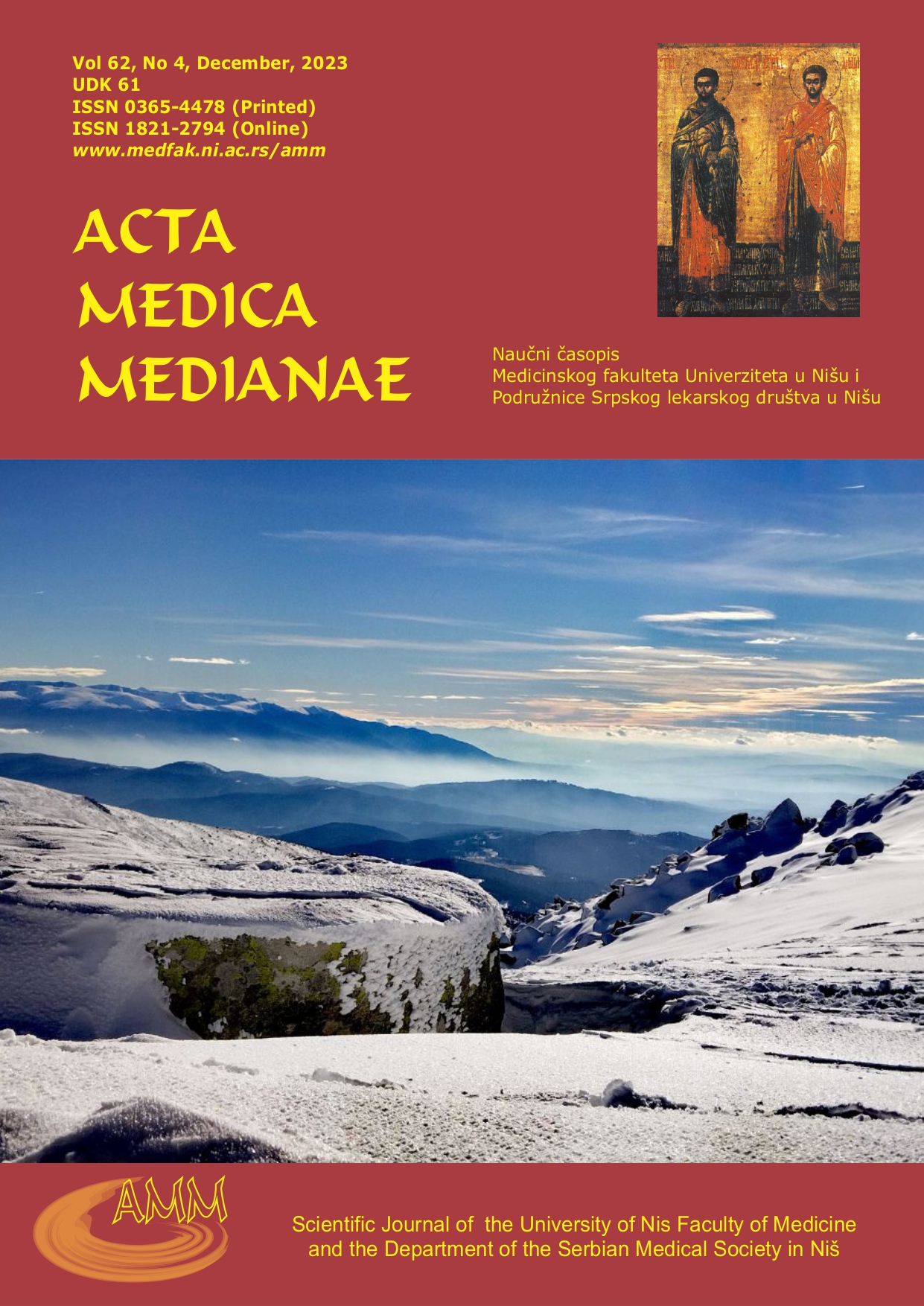EFEKAT COVID-19 KRIZE NA PRAĆENJE HRONIČNIH BOLESTI – PREDVIĐANJE PODATAKA KOJI NEDOSTAJU
Sažetak
Pandemija COVID-19 imala je izrazito negativan uticaj ne samo na praćenje hroničnih bolesti nego i na prikupljanje podataka kroz medicinske informacione sisteme u ustanovama primarnog zdravstva. Opravdano, fokus je inicijalno prebačen na antipandemijske mere, dok je broj poseta vezanih za službu opšte prakse, posebno radi praćenja hroničnih bolesti, opao.
Sa manjim brojem raspoloživih podataka, algoritmi koji se bave identifikovanjem potencijalnih novih hroničnih bolesnika na osnovu prikupljenih zahteva postali su manje relevantni, a broj bolesnika koje više nije bilo moguće identifikovati je porastao.
U ovom radu prikazali smo unapređenje pomenutih algoritama za sumiranje podataka i identifikovanje hroničnih bolesnika kroz dodavanje novih kriterijuma za pretraživanje, koristeći mogućnosti integracije sa drugim medicinskim informacionim sistemima.
Unapređeni algoritam je evaluiran na podacima prikupljenim u Domu zdravlja u Nišu i upoređen sa rezultatima koje je dala inicijalna verzija algoritma.
Reference
Aleksić D, Rajković P, Vučković D, Janković D, Milenković A. Data summarization method for chronic disease tracking. J Biomed Inform 2017;69:188–202. [CrossRef][PubMed]
Blumenthal D, Fowler EJ, Abrams M, Collins SR. Covid-19 — implications for the health care system. N Engl J Med 2020;383(15):1483–8. [CrossRef][PubMed]
Brennan P, Perola M, van OmmenGJ, Riboli E. Chronic disease research in Europe and the need for integrated population cohorts. Eur J of Epidemiol 2017;32(9):741–9. [CrossRef][PubMed]
Choflet A, Packard T, Stashower K. Rethinking organizational change in the COVID-19 era. J HospManag Health Policy 2021;5:16. [CrossRef]
ChudasamaYV, Gillies CL, Zaccardi F, Coles B, Davies MJ, Seidu S, et al. Impact of COVID-19 on routine care for chronic diseases: a global survey of views from healthcare professionals. Diabetes MetabSyndr 2020;14(5):965-7. [CrossRef][PubMed]
Dennis SM, Zwar N, Griffiths R, Roland M, Hasan I, Powell Davies G, et al. Chronic disease management in primary care: from evidence to policy. Med J Aust 2008;188:S53-6. [CrossRef][PubMed]
Feinglass J, Salmon JW. The use of medical management information systems to increase the clinical productivity of physicians. In: The Corporate Transformation of Health Care: Part 2: Perspectives and Implications. Taylor and Francis; 2021. p. 139-61. [CrossRef]
Holmgren AJ, Downing NL, Tang M, Sharp C, Longhurst C, Huckman RS. Assessing the impact of the COVID-19 pandemic on clinician ambulatory electronic health record use. J Am Med Inform Assoc 2022;29(3):453–60. [CrossRef][PubMed]
Jain D, Singh V. Feature selection and classification systems for chronic disease prediction: A review. Egypt Inform J 2018;19(3):179-89. [CrossRef]
Kalra D, Beale T, Heard S. The openEHR Foundation. Stud Health Technol Inform 2005;115:153–73. [PubMed]
Kenei J, Opiyo E, Oboko R. Visualizing semantic structure of a clinical text document. European Journal of Electrical Engineering and Computer Science 2020;4(6):1-11. [CrossRef]
Kjeldsen SE. Hypertension and cardiovascular risk: General aspects. Pharmacol Res 2018;129:95-9. [CrossRef][PubMed]
Levy-Fix G, KupermanGJ, Elhadad N. Machine learning and visualization in clinical decision support: Current state and future directions. 2019 Jun 6 “cited 2023 Feb 10”. Available from: URL: https://arxiv.org/ftp/arxiv/papers/1906/1906.02664.pdf [CrossRef]
Milenkovic A, Jankovic D, Rajkovic P. Extensions and adaptations of existing medical information system in order to reduce social contacts during COVID-19 pandemic. Int J Med Inform 2020;141(104224):104224. [CrossRef][PubMed]
MirskyJB, Horn DM. Chronic disease management in the COVID-19 era. Am J Manag Care 2020;26(8):329-30. [CrossRef][PubMed]
NCD Risk Factor Collaboration (NCD-RisC). Worldwide trends in hypertension prevalence and progress in treatment and control from 1990 to 2019: a pooled analysis of 1201 population-representative studies with 104 million participants. Lancet 2021;398(10304):957-80. [CrossRef][PubMed]
Patel SY, Mehrotra A, Huskamp HA, Uscher-Pines L, Ganguli I, Barnett ML. Trends in Outpatient Care Delivery and Telemedicine During the COVID-19 Pandemic in the US. JAMA Intern Med 2021;181(3):388–91. [CrossRef][PubMed]
Rajkovic P, Jankovic D, Milenkovic A. Developing and deploying medical information systems for Serbian public healthcare: Challenges, lessons learned and guidelines. ComputSciInfSyst 2013;10(3):1429–54. [CrossRef]
Rajković P, Janković D, Tošić V. A software solution for ambulatory healthcare facilities in the Republic of Serbia. In: Healthcom 2009. Proceedings of 11th International Conference on e-Health Networking, Applications and Services (Healthcom); 2009 Dec 16-18; Sydney, Australia. IEEE; 2009. p. 161-8. [CrossRef]
Rajković P, Milenković A, Đorđević A, Janković D. The Effect of COVID Crisis on Chronic Disease Tracking – Identifying a Data Gap, In: Karabulut K, Orhan O, editors. ISPEC 2021. 12th International Conference on Engineering and Natural Sciences, the Proceedings Book; 2021 Dec 24-25; Bingol, Turkey; 2021. P. 91-8.
Saqib MAN, Siddiqui S, Qasim M, Jamil MA, Rafique I, Awan U, et al. Effect of COVID-19 lockdown on patients with chronic diseases. Diabetes MetabSyndr 2020;14(6):1621-3. [CrossRef][PubMed]
Sathian B, Asim M, Banerjee I, Pizarro AB, Roy B, Van Teijlingen ER, et al. Impact of COVID-19 on clinical trials and clinical research: A systematic review. Nepal J Epidemiol 2020;10(3):878–87. [CrossRef][PubMed]
Tort-Nasarre G, Alvarez B, Galbany-Estragués P, Subías-Miquel M, Vázquez-Segura E, Marre D, et al. Front‐line nurses’ responses to organisational changes during the COVID‐19 in Spain: A qualitative rapid appraisal. J NursManag 2021;29(7):1983–91. [CrossRef][PubMed]
Wang S, Kang B, Ma J, Zeng X, Xiao M, Guo J, et al. A deep learning algorithm using CT images to screen for Corona virus disease (COVID-19). EurRadiol 2021;31(8):6096–104. [CrossRef][PubMed]
World Health Organization. More than 700 million people with untreated hypertension. 2021 Aug 25 “cited 2023 Feb 10”. Available from: URL: https://www.who.int/news/item/25-08-2021-more-than-700-million-people-with-untreated-hypertension
Wright A, Salazar A, Mirica M, Volk LA, Schiff GD. The invisible epidemic: Neglected chronic disease management during COVID-19. J Gen Intern Med 2020;35(9):2816–7. [CrossRef][PubMed]
Xu LD, Duan L. Big data for cyber physical systems in industry 4.0: a survey. EnterpInfSyst 2019;13(2):148–69. [CrossRef]
Yamazaki D, Hitomi H, Nishiyama A. Hypertension with diabetes mellitus complications. Hyperten Res 2018;41(3):147-56. [CrossRef][PubMed]

